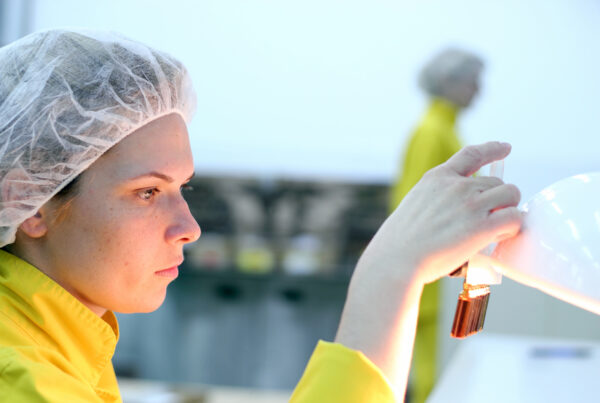What is Poka-Yoke?
Poka-Yoke, originating from Japanese manufacturing methodologies, is a quality assurance technique designed to prevent mistakes before they occur or become costly errors. A direct translation is “mistake-proofing” or “error-proofing,” underscoring its function in anticipating and eliminating potential manufacturing errors. Poka-Yoke strategies encompass a range of tools and techniques, all aiming to mitigate the risk of both manufacturing defects and design defects.
In the context of lean manufacturing, Poka-Yoke serves a vital role. It assists in optimizing production processes, reducing waste, and improving overall product quality. With manufacturing errors and omissions posing serious risks to both time and resource efficiency, the adoption of Poka-Yoke can drive substantial improvements in operational performance.
Understanding the core principles of Poka-Yoke leads to its more effective implementation in the manufacturing landscape. Crucially, Poka-Yoke does not merely address the symptoms of quality defects in manufacturing; it addresses the root causes of manufacturing defects, promoting a proactive and preemptive approach to error management.
What are the 3 Types of Poka-Yoke in Manufacturing?
The diversity of Poka-Yoke applications is reflected in the three primary types of Poka-Yoke strategies: Contact Method, Fixed-Value (or constant number) Method, and the Sequence (or motion step) Method.
The Contact Method detects errors by testing the physical attributes of a product. For instance, in the cosmetic industry, a contact method might be used to ensure that every lipstick tube is correctly capped before packaging. If the cap is not present, the system stops, thereby preventing a manufacturing defect from reaching the customer.
The Fixed-Value Method ensures that a specific number of actions have been performed before moving on to the next step in the process. A practical application can be seen in the food industry, where a fixed-value method is used to confirm the exact number of items in packaging. For example, ensuring that every box of cereal contains exactly one toy or that each pack of cookies has the correct quantity.
The Sequence Method ensures that processes occur in the correct order, a key principle in reducing manufacturing errors. In the pharmaceutical industry, a sequence method might enforce the order of operations in drug production, such as requiring that ingredients be mixed in a specific sequence. Disruptions in this sequence could lead to serious quality issues, making the sequence method a crucial component of Poka-Yoke in this context.
In all these cases, the goal of Poka-Yoke is to identify and correct potential errors before they result in defects, thus improving overall quality and efficiency in manufacturing.
Poka-Yoke Examples
The following are seven real-world examples of how Poka-Yoke is utilized across industries to ensure quality and prevent defects:
- Scale Integration: Used across batch manufacturing, scale integration in Poka-Yoke helps ensure the correct amounts of raw materials are used in production. By weighing out raw materials, manufacturers can avoid over- or under-utilization, leading to a consistent product and reduced waste.
- Barcode Scanning: Many manufacturers scan barcodes on raw ingredients and packaging to confirm their correctness before packaging. This helps prevent errors such as adhering the wrong label to a bottle before shipment.
- Testing of Raw Material: Testing of raw materials as a Poka-Yoke measure is used to ensure the quality and safety of the end product. For example, checking the freshness and quality of raw eggs before they are used in large-scale bakery operations prevents food contamination and maintains consistent taste.
- Weighing of Finished Goods: After goods have been manufactured and packaged, weighing them ensures that the process has been completed correctly. This can be particularly important in the cosmetics industry, where underfilled or overfilled products could lead to customer dissatisfaction and returns.
- Allergen Labels: Allergen labeling is a crucial Poka-Yoke method in the food industry. Correct allergen labels prevent serious health hazards for consumers with specific allergies. This is both a public safety measure and a method to prevent costly recalls due to labeling errors.
- Metal Detection: In industries such as food processing and pharmaceuticals, metal detection helps in identifying any foreign bodies that may have contaminated the product during the manufacturing process. This ensures product safety and prevents potential harm to consumers and the brand’s reputation.
- PLC Integration: Programmable Logic Controller (PLC) integration serves as a Poka-Yoke measure in several industries. PLCs can automate parts of the manufacturing process, ensuring steps are performed correctly, consistently, and in the correct sequence, minimizing the possibility of human error.
By incorporating these Poka-Yoke tools and techniques into manufacturing processes, companies can significantly reduce errors, improve product quality, and enhance overall efficiency. Each tool addresses specific risks or challenges, demonstrating the versatility and effectiveness of Poka-Yoke in diverse industries.
Poka-Yoke and HACCP: A Comparative Analysis
Poka-Yoke and HACCP (Hazard Analysis and Critical Control Points) are both systematic preventive approaches used within industries that prioritize quality control, but they apply to different aspects of production processes and are utilized in different contexts.
Poka-Yoke, as we’ve discussed earlier, is a Japanese term for “mistake-proofing” and is used across various manufacturing sectors. Its primary aim is to prevent errors during the production process, thereby minimizing defects in the final product. This is achieved through the implementation of fail-safe mechanisms and techniques such as contact, fixed-value, and sequence methods.
On the other hand, HACCP is a systematic preventive approach to food safety and pharmaceutical safety that identifies physical, chemical, and biological hazards in production processes that can cause the finished product to be unsafe. It designs measurements to reduce these risks to a safe level. In other words, HACCP is a management system in which food safety is addressed through the analysis and control of biological, chemical, and physical hazards from raw material production, procurement and handling, to manufacturing, distribution and consumption of the finished product.
In comparison, Poka-Yoke focuses more broadly on preventing errors that could lead to any form of defect in the product, while HACCP specifically targets hazards that could compromise safety in food and pharmaceutical products. While both methodologies are preventive and proactive, Poka-Yoke is a more general approach that can be applied to any process or industry, while HACCP is used specifically in industries where safety hazards can occur.
When used together, these methodologies can complement each other, with HACCP identifying potential hazards and critical control points, and Poka-Yoke ensuring that errors at these points are prevented. The combination of these strategies can lead to a more robust system for ensuring both quality and safety in manufacturing processes.
How to Implement Poka-Yoke with MES Software
Implementing Poka-Yoke in your manufacturing process becomes even more powerful when coupled with a robust Manufacturing Execution System (MES) software, such as the one provided by Mar-Kov. MES solutions bring together all the necessities of a modern-day manufacturing system in an easy-to-use, intuitive solution, creating a holistic environment where error-proofing methodologies like Poka-Yoke can truly flourish.
When choosing an MES, consider factors such as its integration capabilities with existing systems, its ability to support the three types of Poka-Yoke, and its adaptability to your specific industry requirements. Moreover, a quality MES should provide comprehensive defect detection in manufacturing, thereby enabling you to address issues proactively.
Mar-Kov’s MES solution exemplifies these qualities. Its extensive capabilities include scale integration and barcode scanning functionalities. Its robust raw material testing and allergen label verification ensure quality control in compliance with industry regulations. Furthermore, it supports weighing of finished goods and seamlessly integrates with PLC systems, thereby enhancing automated processes and reducing human error.
Mar-Kov’s MES software not only addresses the types of errors in manufacturing but also provides tools for continuous improvement, such as analytics for monitoring and reducing causes of manufacturing defects. With Mar-Kov’s solution, Poka-Yoke isn’t just a principle – it becomes an integral part of your operational fabric, reflected in everyday manufacturing processes.
In an era where manufacturing errors and omissions can have significant cost and reputational repercussions, Mar-Kov stands as a partner committed to your organization’s quality journey. To learn more about how Mar-Kov’s MES software can help you implement Poka-Yoke methods and reduce manufacturing defects, visit our contact page to get in touch with our team.




